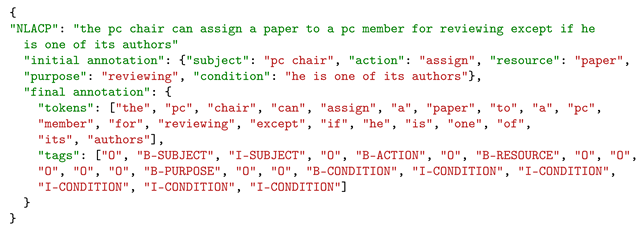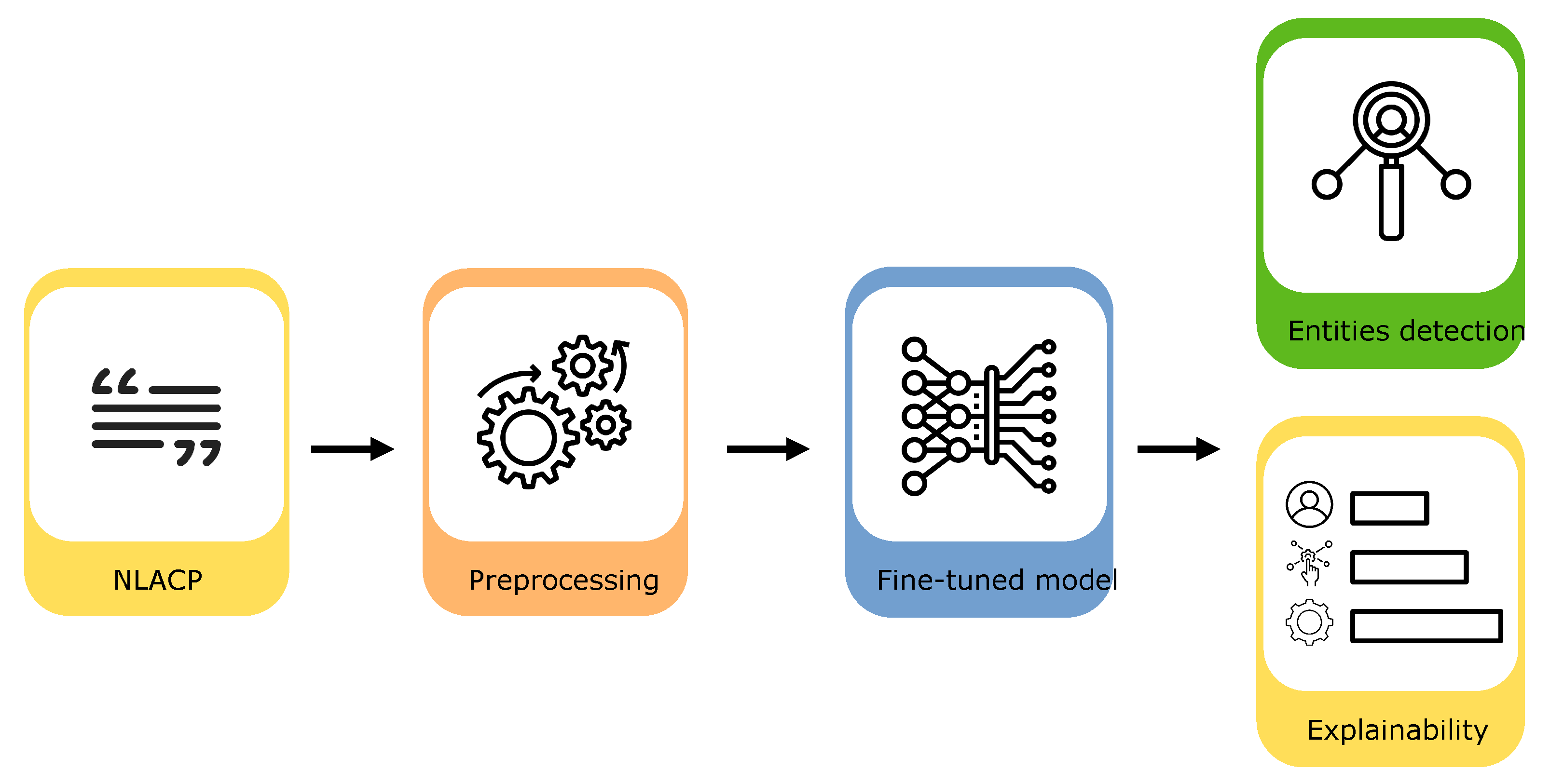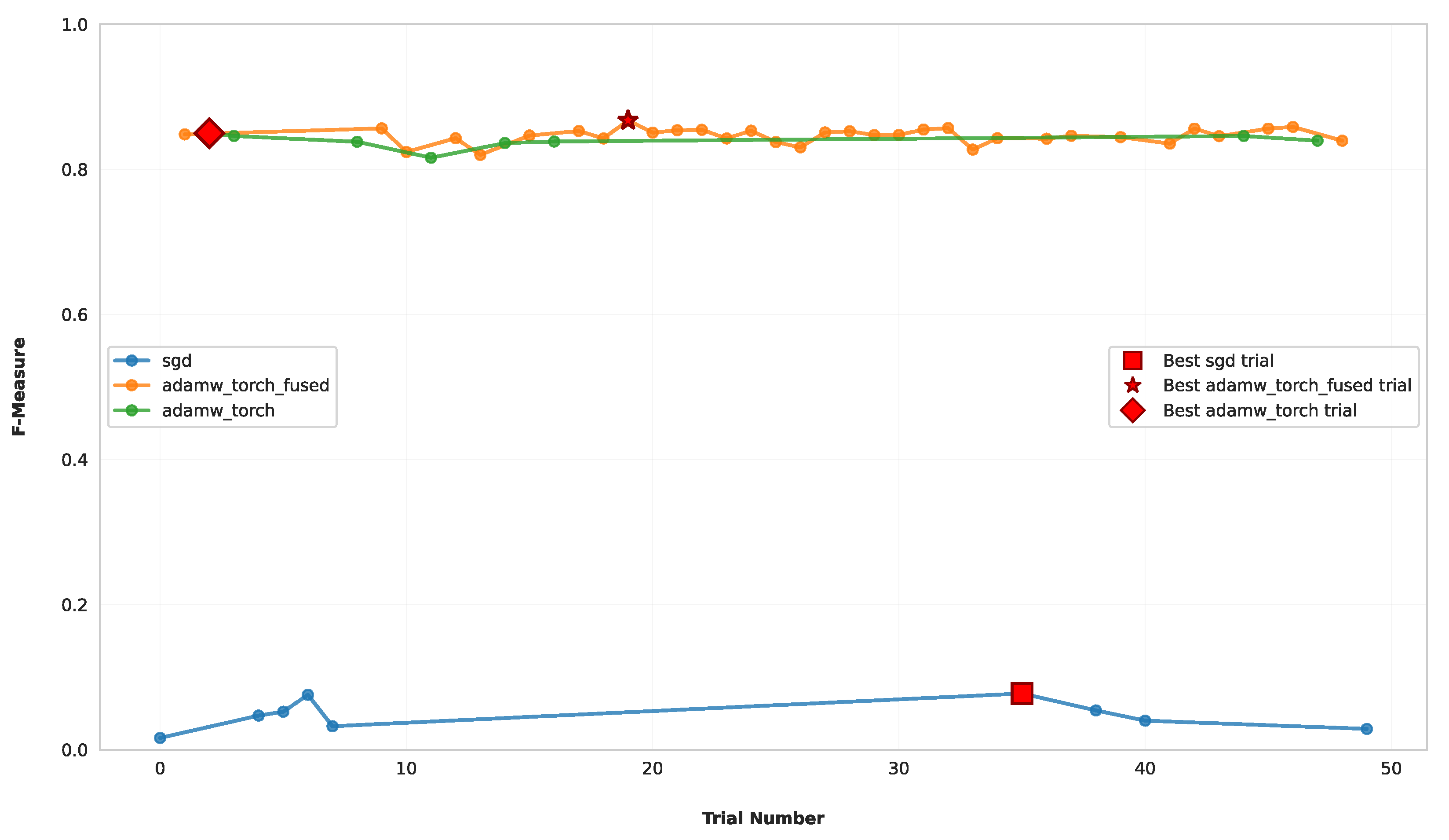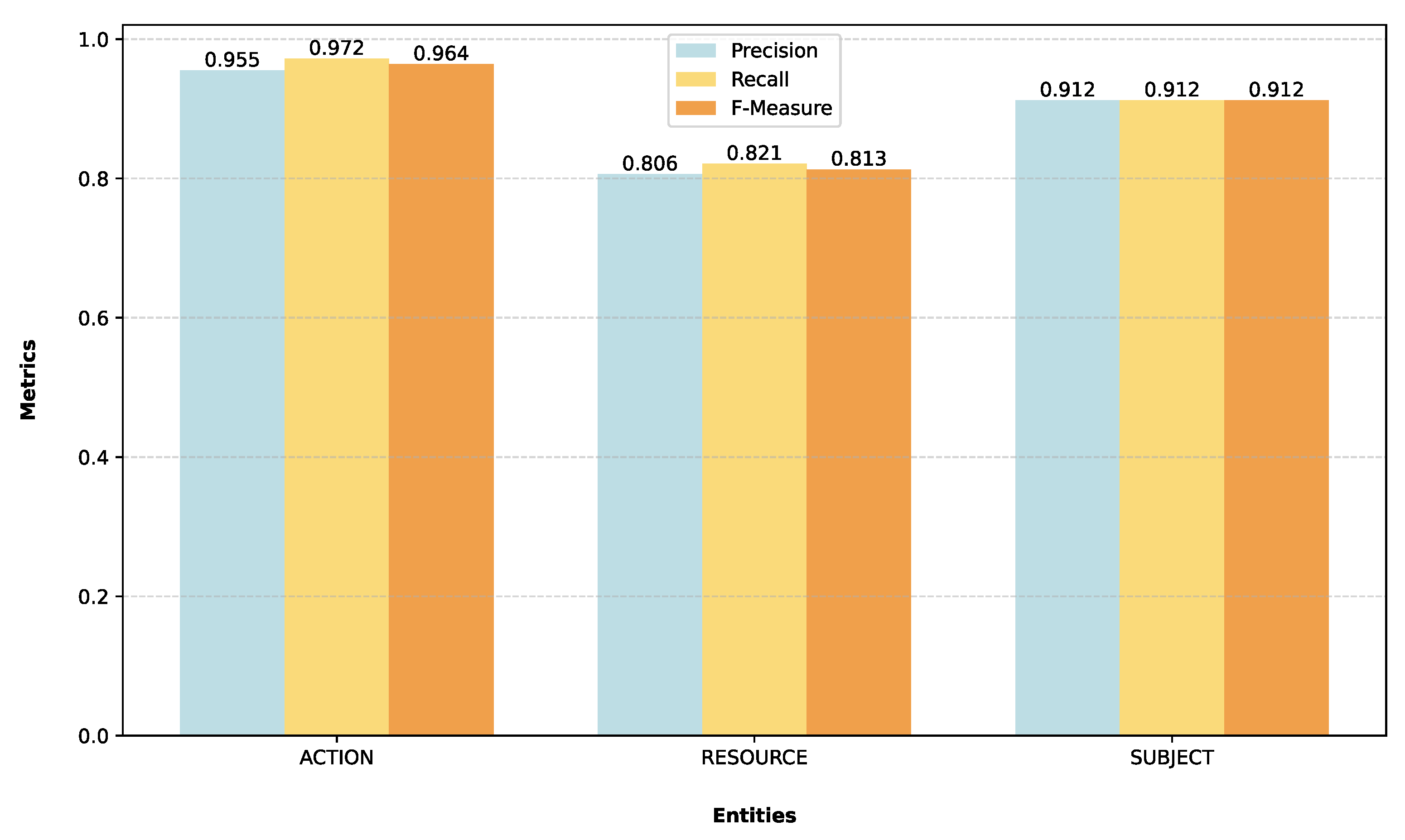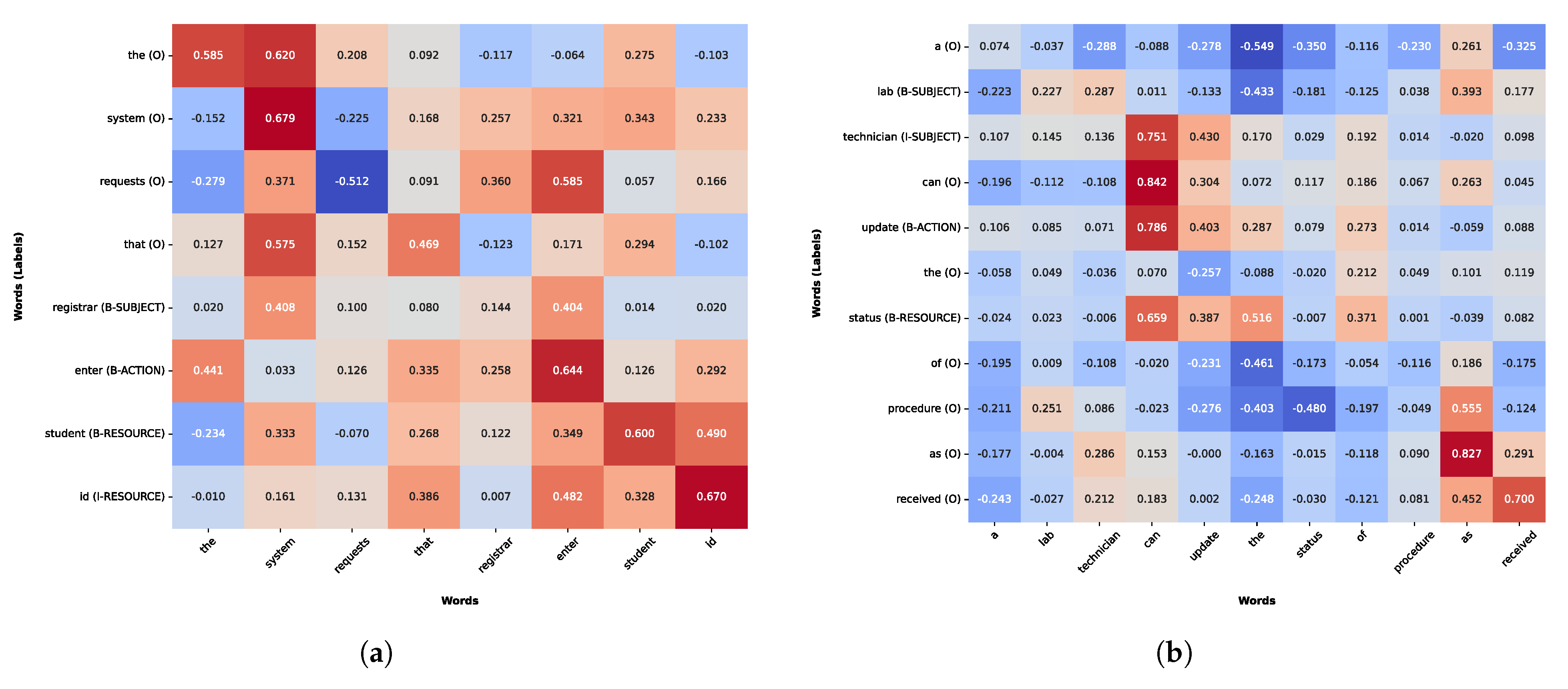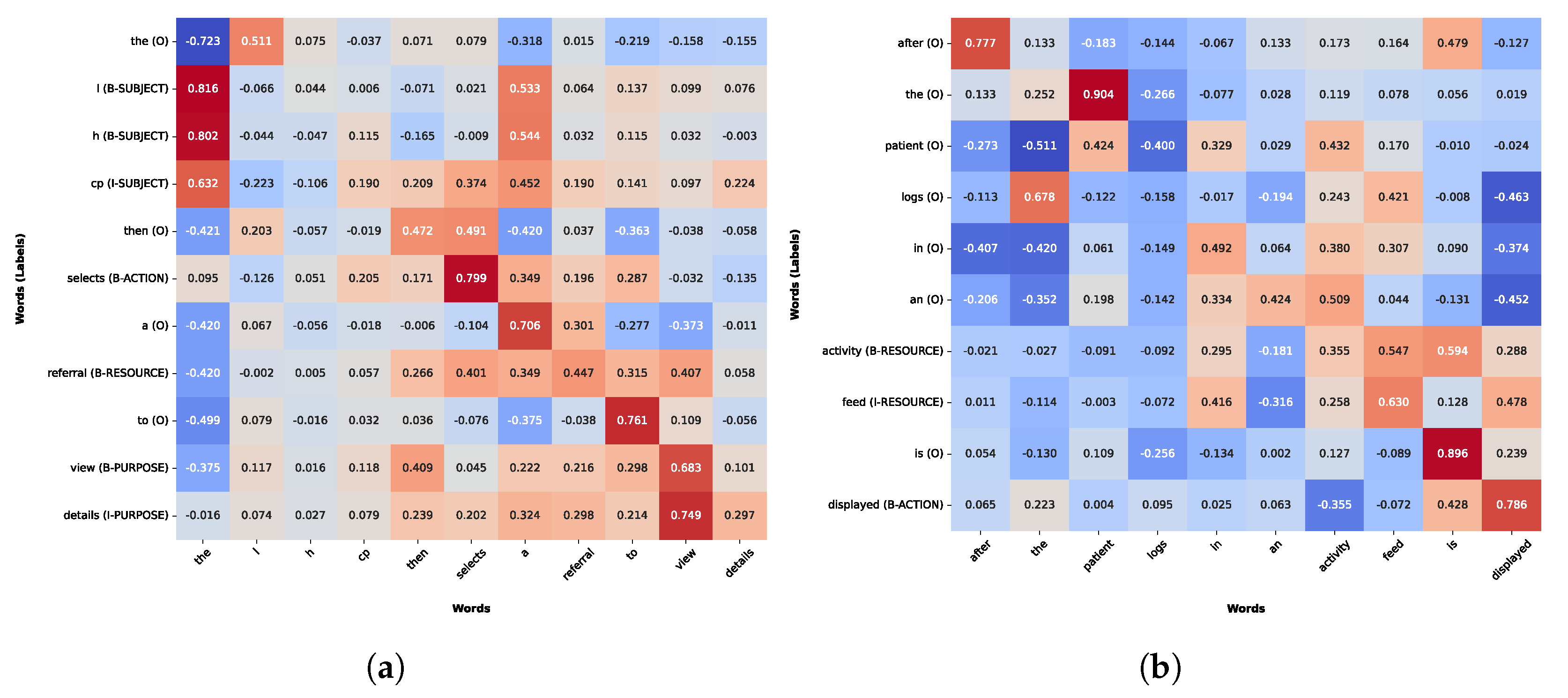In [
13], the authors presented SPARCLE, a tool for authoring and parsing privacy policies that utilizes natural language parsing technology to identify policy elements, enabling users to create, modify, and visualize policies. It includes a set of grammars that can parse natural language privacy policy rules and identify policy elements. Xiao et al. [
11] proposed Text2Policy, a tool that automatically extracts access control policies from natural language software documents, addressing the challenge of manual extraction. For ACP rules, authors identified the subject, action, and resource elements based on matched semantic patterns and inferred the policy effect by checking for negative expressions. The system employs shallow parsing to annotate sentences with phrases, clauses, and grammatical functions, utilizing a domain-specific dictionary that facilitates the association of verbs with predefined semantic classes, thereby aiding in the identification of the correct action and its corresponding semantic meaning. Authors in [
12] created a tool called ACRE (Access Control Rule Extraction), which utilizes NLP techniques to extract access control rules from natural language documents automatically. Once they determine that a sentence contains an ACR, they extract the subject, action, and resource elements from the sentence representation using a relation extraction algorithm. The process begins with a small, well-known set of ACR patterns and then expands those patterns to identify other, closely related patterns. The algorithm iterates until no new items or patterns are discovered. After that, they train the naïve Bayes classifier by using the identified patterns in the other documents, achieving a maximum F1-score of 98%. The paper [
17] proposes a technique to identify access control policy sentences from natural language policy documents. The study employs a combination of NLP and machine learning techniques to extract sentences that exhibit ACP content and to identify various types of features, including dependency relations. To identify the ACP sentences, they utilized inherent relations that occur in these types, such as subjects, objects, and verbs. Researchers in [
18] introduced semantic role labeling as a method to identify ACPs within unrestricted natural language documents, aiming to automate the process of translating security policies into machine-readable formats. After the ACP identification, they used a semantic parser to identify the predicate-argument structure. It involves detecting semantic arguments associated with a verb (or predicate) and classifying them into specific roles (e.g., who did what to whom). The proposed SRL-based approach achieved an average F1-score of 75% for correctly identifying ACP elements. Alohaly et al. [
19] proposed a two-phase framework to extract Attribute-Based Access Control (ABAC) constraints from unstructured natural language access control policies using a BiLSTM model. They treated the constraints identification phase as a sequence labeling task after labeling the presence of constraints in NLACPs using the BIO (Beginning, Inside, Outside) format. The study achieved an F1 score of 0.91 in detecting at least 75% of each constraint expression. Authors in [
20] propose a sequence labeling model based on the hybrid neural network RoBERTa-BiLSTM-CRF to mine content attributes from unstructured text for attribute-based access control (ABAC) in a big data environment. Specifically, they proposed a model comprising three modules: word embedding, context encoding, and inference, and utilized the RoBERTa pre-training model for dynamic word embeddings. The authors tested the approach on the publicly available CLUENER2020 data set, achieving an F1-measure of 80%. In [
11], the authors propose an automated approach to extract ABAC policies from natural-language documents in healthcare systems, utilizing BERT and semantic role labeling to identify access control policy sentences and extract rules. Once they identified the sentences, they used the semantic role labeling sub-module to label the subject-values, subject attribute-values, object-values, and object attribute-values. Unlike other works, Heaps et al. [
21] used an automated approach to extracting access control information from user stories. After identifying statements containing access control information, they performed a named entity recognition task to predict whether a word in a user story represents an “actor” (or end user), a “data object”, or an “operation”. The approach achieved an F1-score of 79.8% for the entity recognition task. Instead, in [
22], authors developed an algorithm for mining ABAC policies from operation logs and attribute data, which can handle incomplete information about entitlements and produce policies with over-assignments. The results obtained show that the mined policy is sufficiently similar to the original ABAC policy, making it a suitable starting point for policy administrators. In [
23] proposed a multi-objective evolutionary approach for inferring attribute-based access control policies from logs of authorized and denied requests. The approach incorporates a domain-specific phenotypic representation, custom genetic operators, and an incremental strategy for learning a policy in an incremental manner.
Unlike prior works that rely on grammar-based parsing, shallow semantic patterns, or traditional machine learning classifiers, our approach leverages a state-of-the-art, end-to-end transformer architecture, eliminating the need for handcrafted rules. Additionally, while other studies have employed deep learning models such as BiLSTMs or hybrid architectures, our work offers a more comprehensive analysis of the model’s entire lifecycle, from hyperparameter optimization to fine-tuning analysis. Finally, the most significant contribution of our work lies in the application of state-of-the-art explainability techniques to diagnose model failures.
